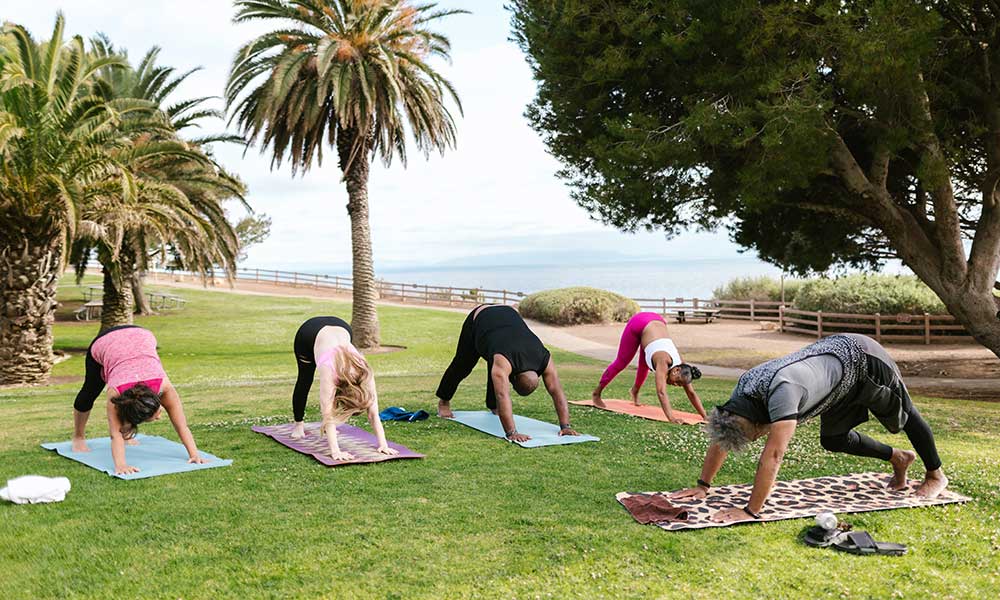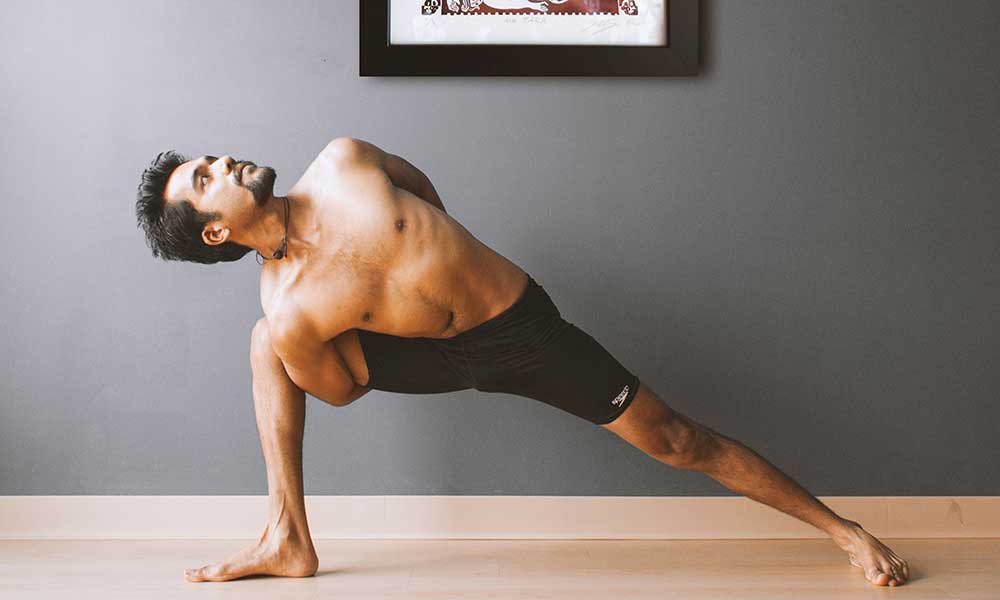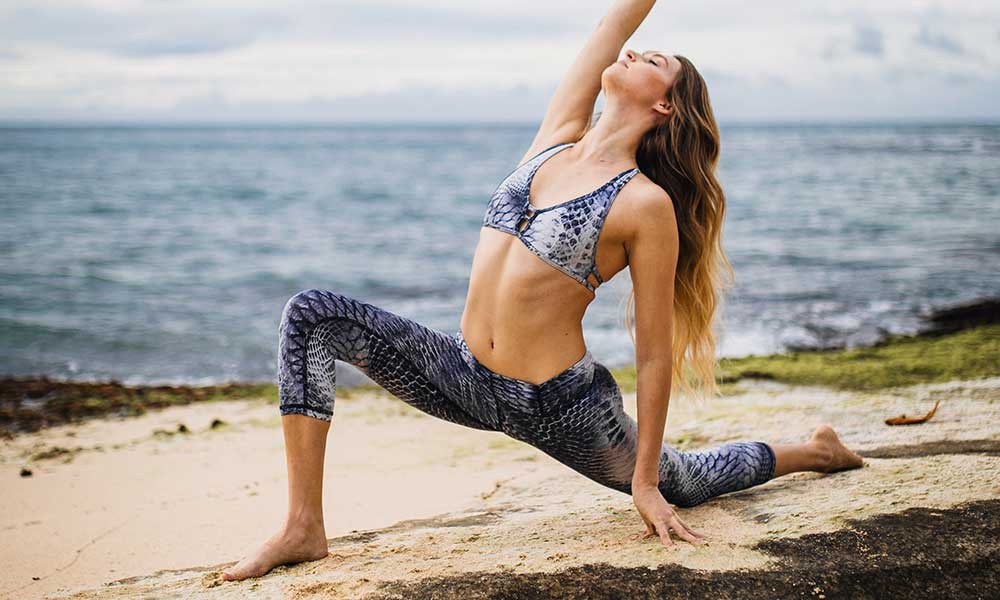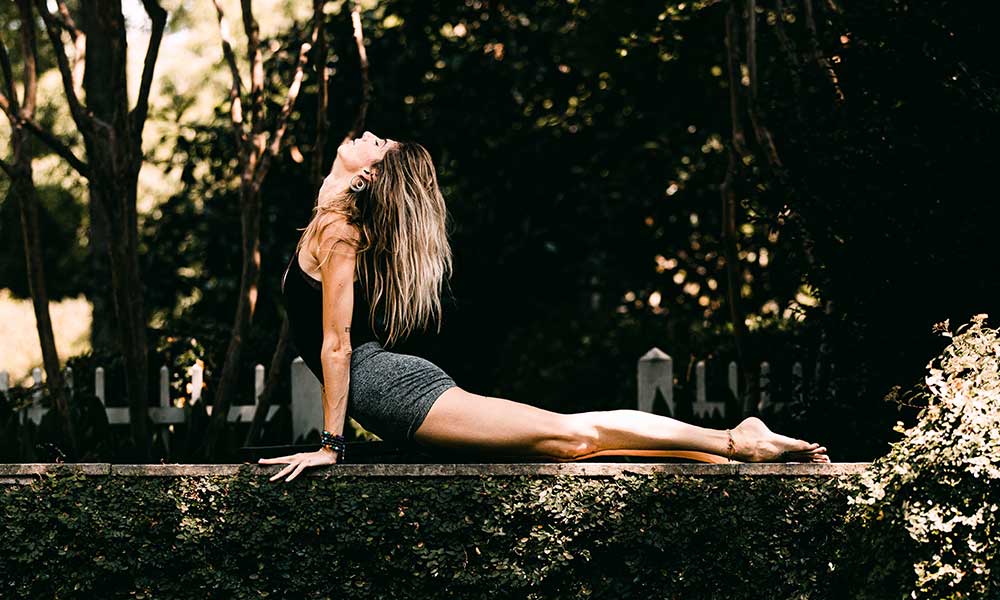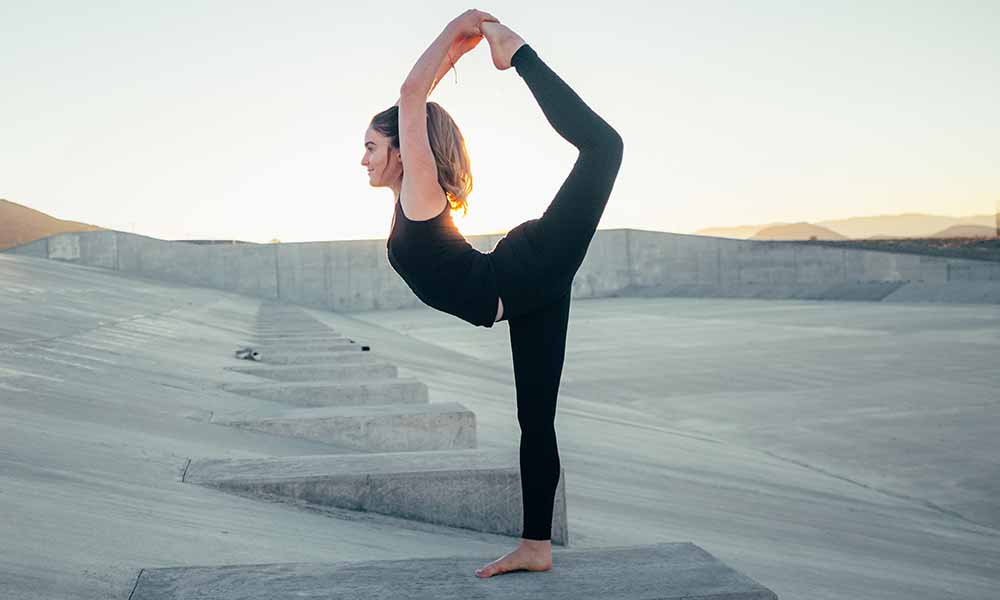If you have ever taken a yoga class or tuned into a virtual one, you might have heard some unfamiliar words being sprinkled throughout the practice. Words like “savasana” or “chaturanga” may have had you scratching your head and looking around at the rest of your classmates for help.
Many of the words we hear in yoga are words and phrases of the ancient language Sanskrit. Sanskrit, widely known as the language of yoga, is the language that many Indian languages are rooted in. Some of the words and terms you hear in yoga class will be in Sanskrit, but not all of them.
Keep reading to familiarize yourself with some of the most common yoga terms for beginners so you can fully immerse your mind, body, and soul into your yoga class!
1. Yoga
First and foremost, the most important word you’ll ever need to remember in yoga is the word “Yoga” itself. The Sanskrit word yoga means “to yoke or unite.” An ancient practice used to end suffering and achieve oneness with the divine, yoga originated in India and is now a popular practice all around the world. It is a physical practice that combines breathing exercises and meditation to bring a sense of peace throughout the entire body. A successful yoga session will engage the mind, body and soul, uniting them as one.
2. A Comfortable Seat
If you are ever in a yoga class and the yoga instructor tells you to find a “comfortable seat,” do not get up and look around for a chair! In yoga, finding a comfortable seat simply means to sit in a way that feels right to you in the moment. You will usually hear your yoga instructor tell you this at the beginning of the class or at the end of the class to prepare for a closing meditation. You can either sit cross-legged on your mat or use a prop like a block or a blanket. Some yogis choose to sit on their calves if comfortable.
3. Meditation
Meditation is an important part of traditional yoga. In fact, depending on what style of yoga you practice, some gurus will argue that it is the most important part of yoga. When we meditate, we allow our mind to take a break from the chatter and noise around us. We allow it to simply exist without having an agenda. There are many different ways to meditate, but the most common style of meditation used in yoga is used in conjunction with breathwork. While it’s not possible to shut our minds off completely, the most important thing is to be mindful of what thoughts are bouncing around in our minds so that we can gently redirect ourselves back to the present moment. One helpful tactic is to close your eyes or fix them on a focal point and focus on your breathing by counting up to 10 and then back down to one.
4. Asana
You will need to know the word ‘asana’ when practicing yoga. The Sanskrit word asana, pronounced “aa-suh-nuh,” literally translates to “seat” and refers to the physical shape that your body makes in any given pose. In your yoga class, you will hear your yoga teacher use the word “asana” interchangeably with “yoga postures” or “yoga poses.” For example, downward facing dog is an asana or yoga pose.
5. Namaste
Namaste—pronounced “nah-mah-stay”—is a term used at the end of a yoga practice as a gesture to honor yourself, those around you and your commitment to the practice. When your yoga class is ending, you will usually be instructed to sit upright on your mat, close your eyes, bring your palms together at the front of your chest, and bow your head down toward your heart as you say ‘namaste.’
6. Om
‘Om’ is a sacred mantra that is usually chanted at the beginning or end of a yoga class. It is a sound that has been nicknamed “the universal sound of consciousness,” symbolizing that we are all one. ‘Om’ is chanted in three parts: “ahhh”, “ooh” and then finally, “mm.” Each segment of the mantra represents the three different stages of life: creation, maintenance, and destruction. In yoga, ‘Om’ is not just a sound, it is a most sacred mantra, symbolic of the cyclical nature of our existence. Chanting this sound in class as a whole group creates a sense of a cycle commencing and ending.
7. Pranayama
Your yoga teacher might say pranayama or ocean breath, in yoga lingo. Either way, when you think pranayama, think breath. The way that you pronounce pranayama is “praw-nee-yaw-mah”, which means breathing techniques. There are many different types of pranayama in yoga. One of the most common breathing techniques used in toga is ‘ujayii pranayama’, also called ujayii breath. Through pranayama, we become aware of our entire body by noticing every subtle rhythm in our breath, mind, and body. All pranayamas have their own unique focus to help us achieve a different goal.
8. Ujayii
As I mentioned above, ujayii (“oo-jah-yee”) is the most commonly used breathing technique in yoga. To practice ujayii breathing, one must take deep, long breaths in and out through the nose. The key is to breathe with intention, rounding out each breath to its fullest potential without force or pressure. The person sitting next to you should not be able to hear these breaths, but you should be able to find a nice, tranquil cadence. When you catch yourself breathing too heavily, it means that you are forcing it too harshly, at which point you are no longer in a state of yoga.
9. Savasana
Savasana, pronounced “shaw-vah-saw-nah,” is probably the most comfy pose you will ever experience in your yoga practice. This yoga pose is typically done at the end of the practice, allowing you to turn your attention inward and let the practice sink in. The Sanskrit word “savasana” means “corpse pose” because it requires you to lay flat on your back in an active rest. The beautiful thing about this pose is that it is done after you have spent the entire class connecting your body to your breathing, leading to a final relaxation.
10. Mudra
A yoga mudra (“mood-druh”) is a hand gesture that makes way for energy flow throughout the body, connecting the body to itself. Your yoga teacher might instruct you to position your hands into a yoga mudra in order to enhance connection and focus. There are several different types of mudras, but the two that you are most likely to see in yoga class are Anjali mudra and Jnana mudra (chin mudra). Anjali mudra is done by pressing the palms together at heart center, while jnana mudra can be practiced by touching the pointer finger and thumb together, extending the other three fingers.
11. Prana
The word ‘prana’, pronounced “praa-nuh” translates to life force or life force energy. It can mean energy, life, or breath. Every muscle, every atom, and every cell is an extension of prana. It is the power that flows freely throughout all living things, bringing vitality and strength.
12. Sun Salutation (Surya Namaskar)
If you enroll in a Vinyasa class, you can expect to Salute to the Sun. Sun salutations, otherwise known as Surya Namaskar, are rituals practiced in yoga that help to clear out energy pathways. A sun salutation will have your body moving around every which way, invigorating the body. Many yoga classes will incorporate sun salutations in between a flow sequence of tastefully linked asanas to help you create space in the body and touch on each one of the chakras (energy center).
13. Chakra
Much of what is done in yoga is intended to balance and cleanse our energy centers in the body, otherwise known as “chakras.” There are seven chakras throughout the body, all of which obtain their own meaning, energetic power, and even color. To feel balanced and peaceful in life, one must have all seven of their chakras aligned. The seven chakras are:
- The Root: Locatedat the tailbone. Represents grounding and stability. Its corresponding color is red.
- The Sacral: Located in the lower abdomen. The emotional center, this chakra holds your creativity, sexuality, pleasure, and sensuality. Its corresponding color is orange.
- Solar Plexus: Located in the upper abdomen. The chakra responsible for self esteem and confidence. Its corresponding color is yellow.
- Heart: Located in the chest. Our center for compassion, empathy, love and forgiveness. Its corresponding color is green.
- Throat: Located in the throat. The chakra responsible for self-expression and communication as well as one’s ability to speak their personal truth. Its corresponding color is blue.
- Third Eye: Located at the center of the forehead. The chakra of intuition, it is comprised of feminine energy, ruling our perception and consciousness. Its corresponding color is indigo.
- Crown: Located at the top of the head. This chakra is responsible for your connection to spirit as well as your sense of universal consciousness. Its corresponding color is white.
14. Shanti
Of all the Sanskrit mantras you will ever hear, ‘Shanti’ might be one of the most important, as the concept is practiced across various religious and spiritual traditions such as Buddhism and Hinduism. Shanti (“shaan-tee”), is a Sanskrit word for “peace.” It is commonly chanted three times to represent threefold peace in the body, mind and spirit. It is specifically in reference to cultivating a state of inner peace as opposed to outer peace.
15. Vinyasa
Vinyasa (“vuh-nyaa-suh”) is a style of yoga comprised of flow linked to the breath. Vinyasa style yoga is a sequence of gracefully linked yoga poses and sun salutations that flow into one another effortlessly, while breathing right along with each movement.
16. Drishti
You might hear your yoga teacher say, “Find your drishti” at some point during your yoga class. Drishti, pronounced (“d-r-ih-sh-t-ih”) is a Sanskrit word for “vision.” When used in yoga, it means your focal point during yoga or meditation. A strong drishti is the key to not falling while practicing balancing poses. Drishti helps you to keep your mind clear and focused during your yoga practice and/or meditation.
17. Chaturanga
This is one of the few yoga words that doesn’t have an English translation that is used frequently, meaning you will hear it being used quite often. Chaturanga, four limbed staff pose, or low plank, is used very often in Vinyasa classes. To do a Chaturanga, your entire body will need to be parallel with the floor, propped up only by your hands and toes. In Vinyasas, this yoga pose will usually be followed by upward facing dog pose, and then downward facing dog pose.
18. Adho Mukha Svanasana (Downward facing dog)
Adho Mukha Svanasana, pronounced “Ah-do Moo-kah Svuh-nuh-suh-nuh” will most likely be referred to as “downward dog” or “downward facing dog” by your yoga teacher. This pose is a fundamental yoga posture that is often used to stretch as well as to transition into a new pose. It is a yoga staple that is quite easy to perform if you are a beginner to yoga. Feet and hands are planted on the floor, while the back and legs are kept straight. Your body should make a “V” shape. Your heels should energetically be attempting to reach the ground.
19. Mantra
You might have heard this word used before in pop culture or by your favorite Instagram influencer. However, the word “mantra” is used in traditional yoga practices quite often. A mantra, pronounced “maan-truh,” can be a sacred word, sound or phrase that is repeated to enhance concentration. Your yoga teacher may ask you to verbally recite your mantra or repeat it silently in your mind. Some mantras are sounds that have no grammatical meaning, whereas other mantras take the form of motivational sayings.
20. Sternum
Yoga instructors love to call out parts of the body and how they are being affected by each pose. However, they sometimes use less familiar words to do so. Your sternum is the breastbone that runs vertically down your chest. Our heart is connected to the sternum, making it a main character in the heart chakra game. Exercises that allow for the sternum to open up help to balance out the heart chakra, improve our ability to breathe, and relieve tension.

